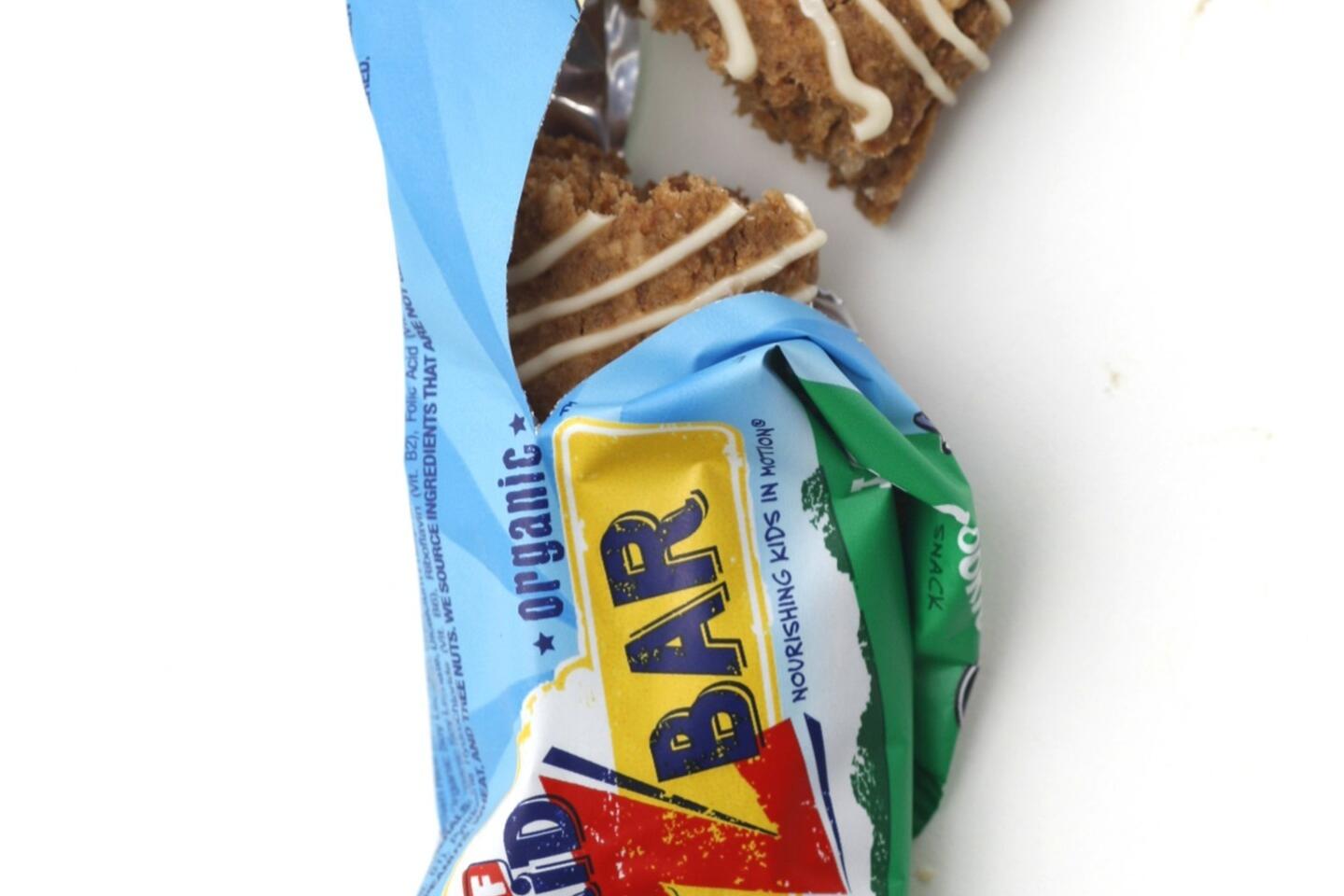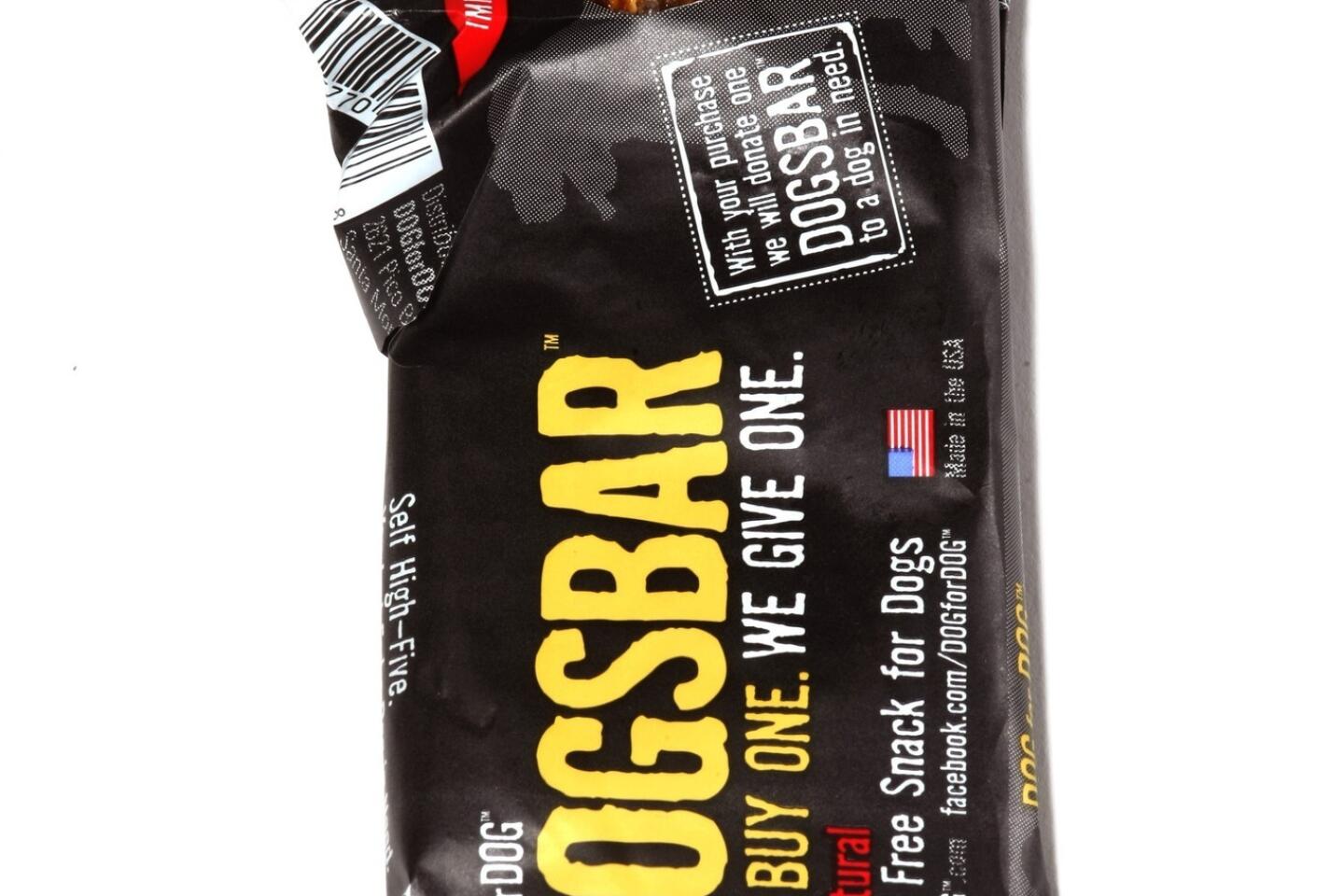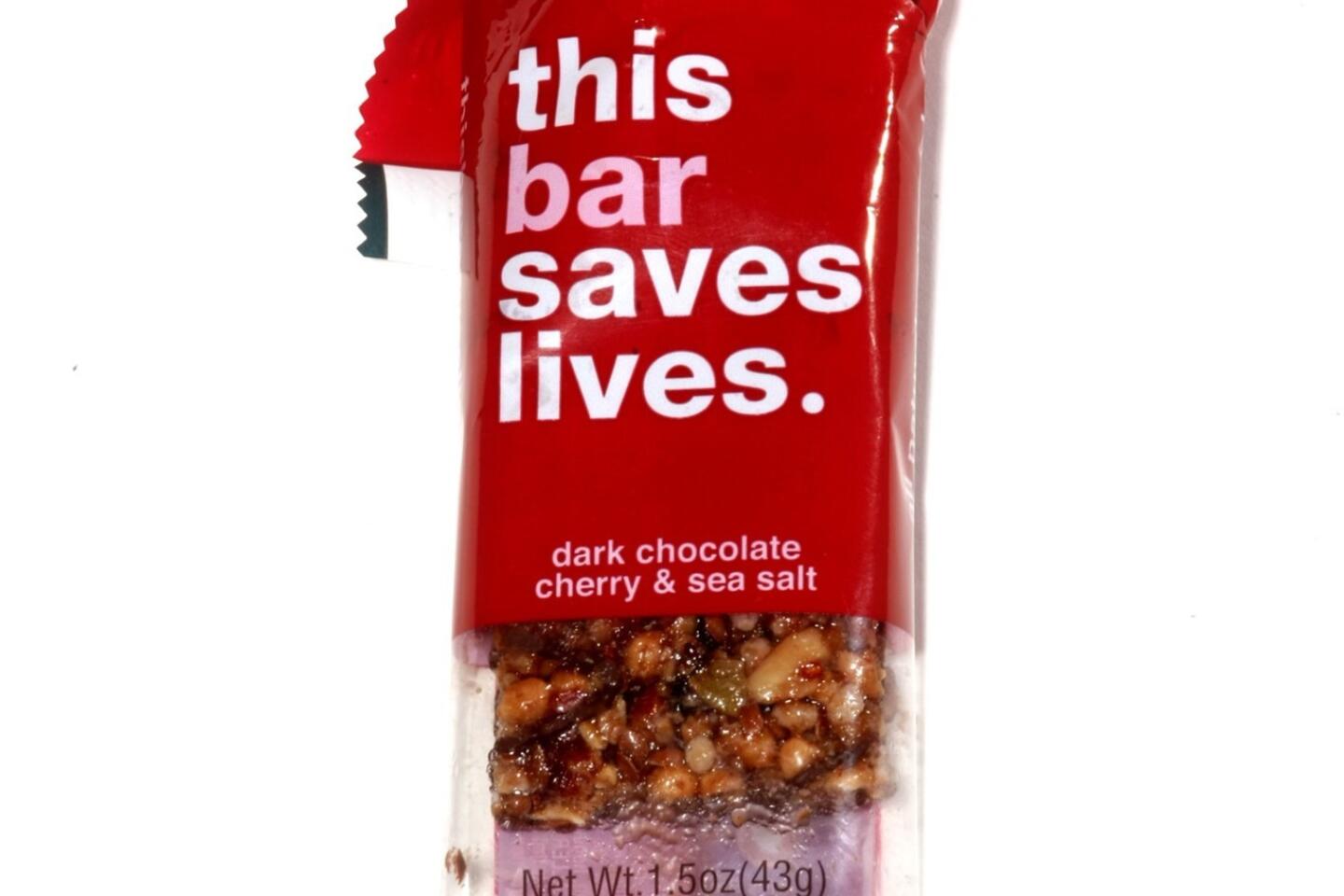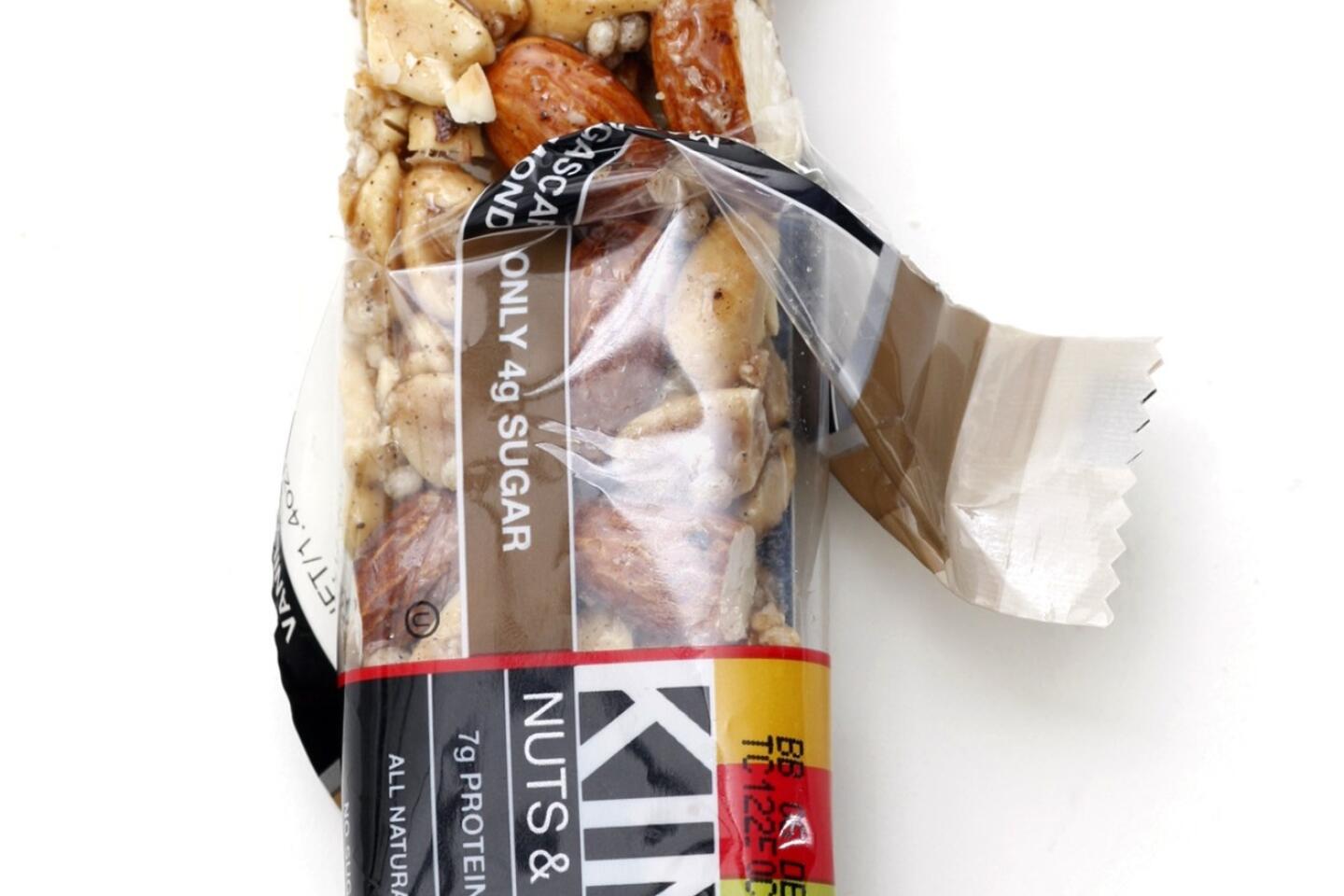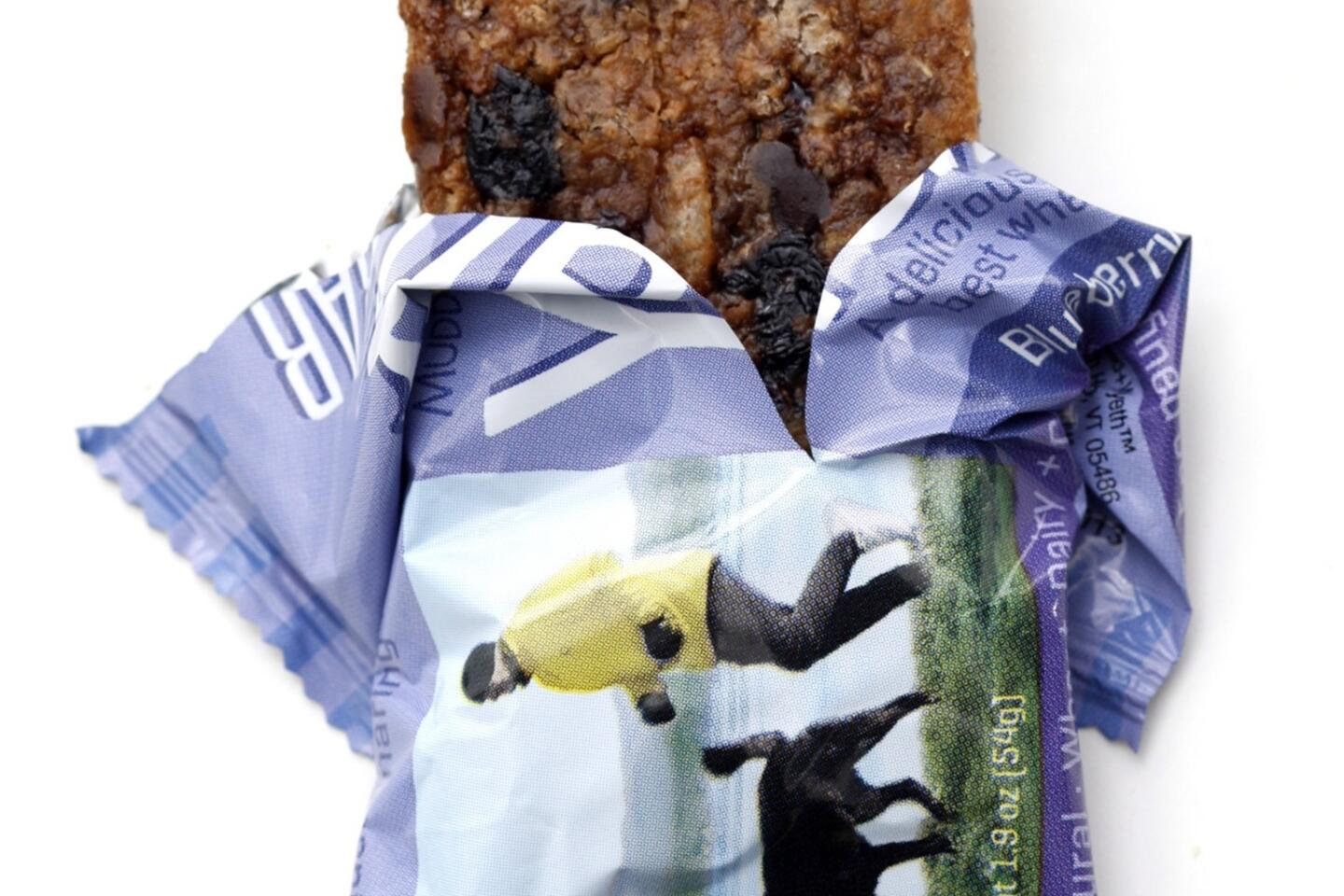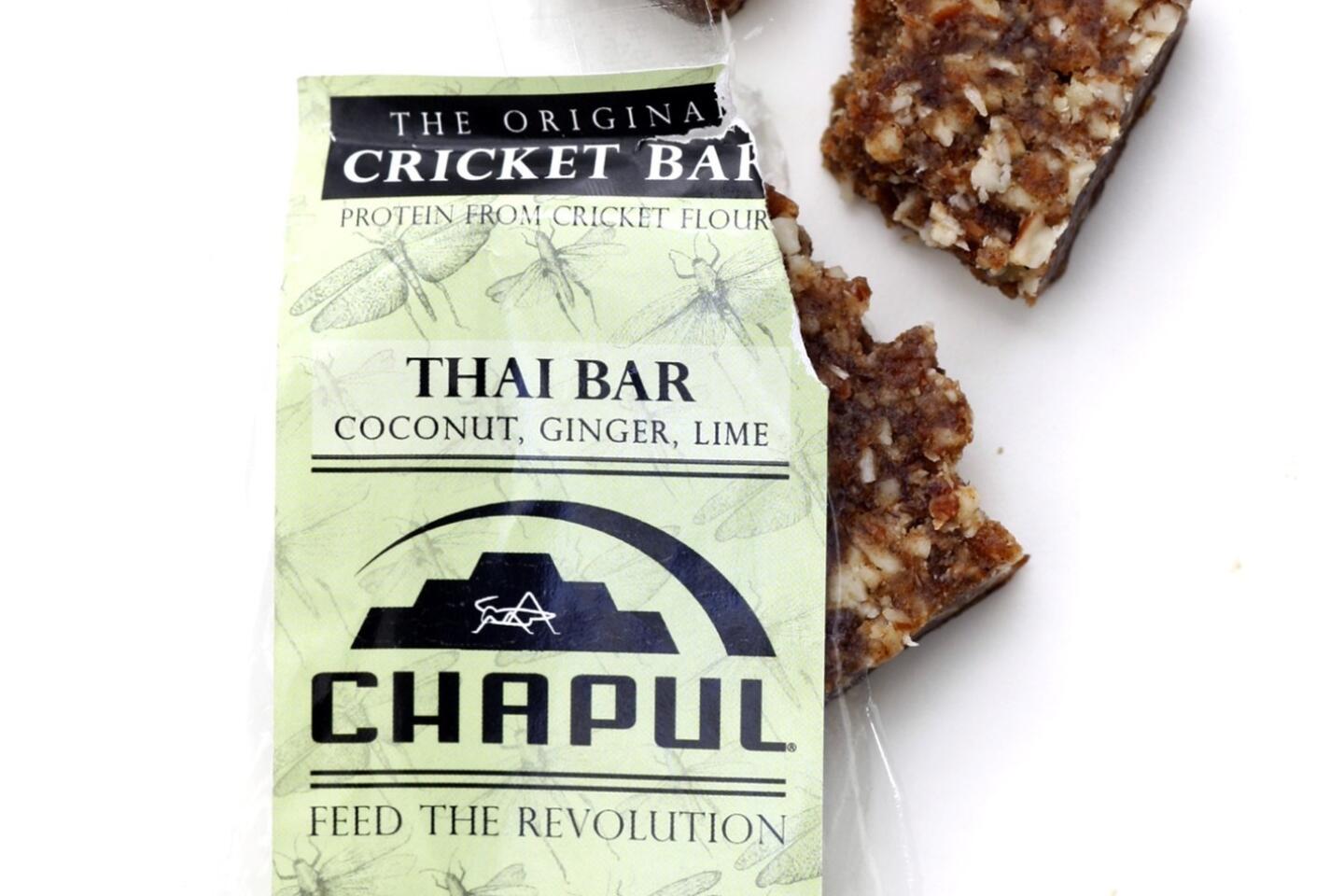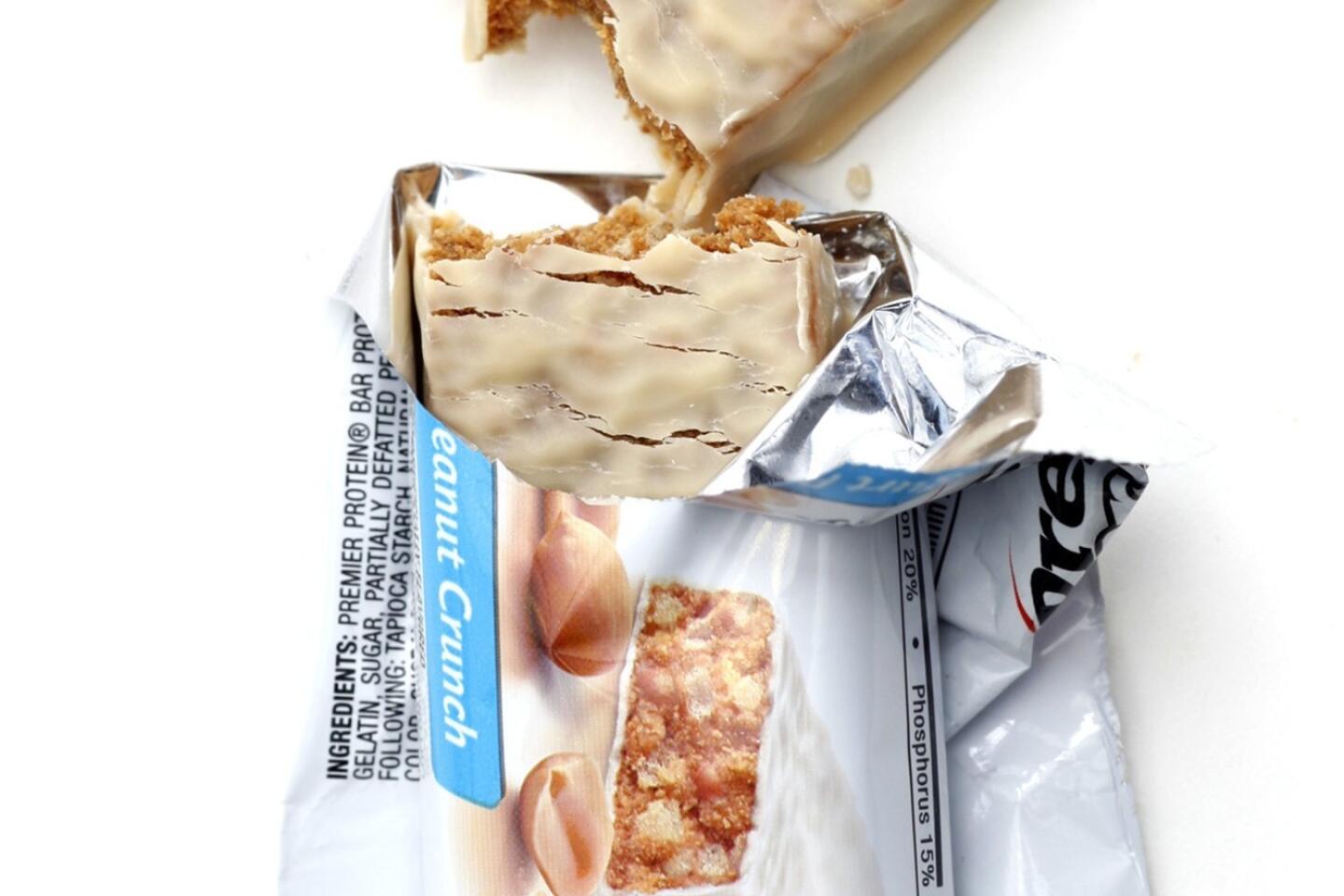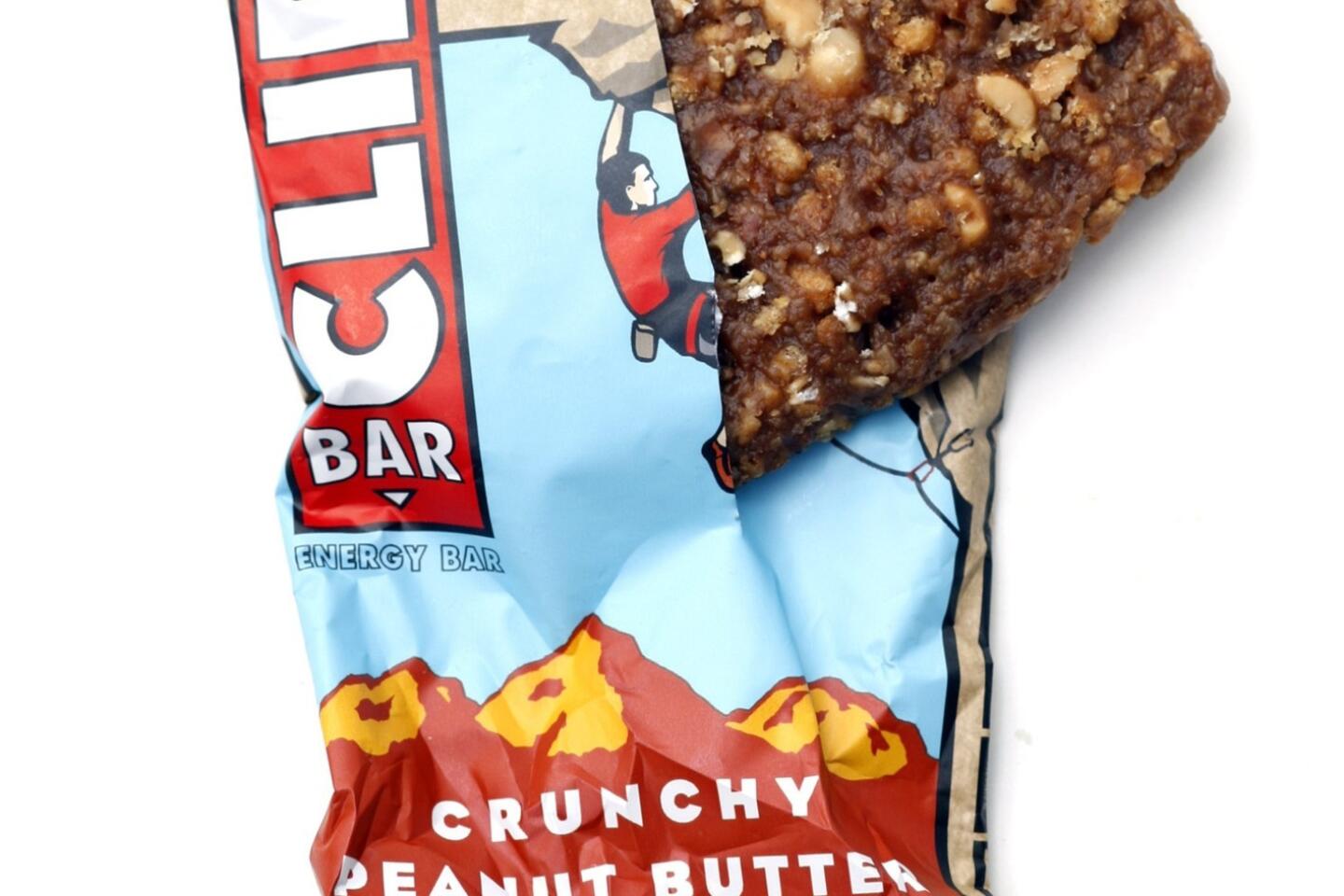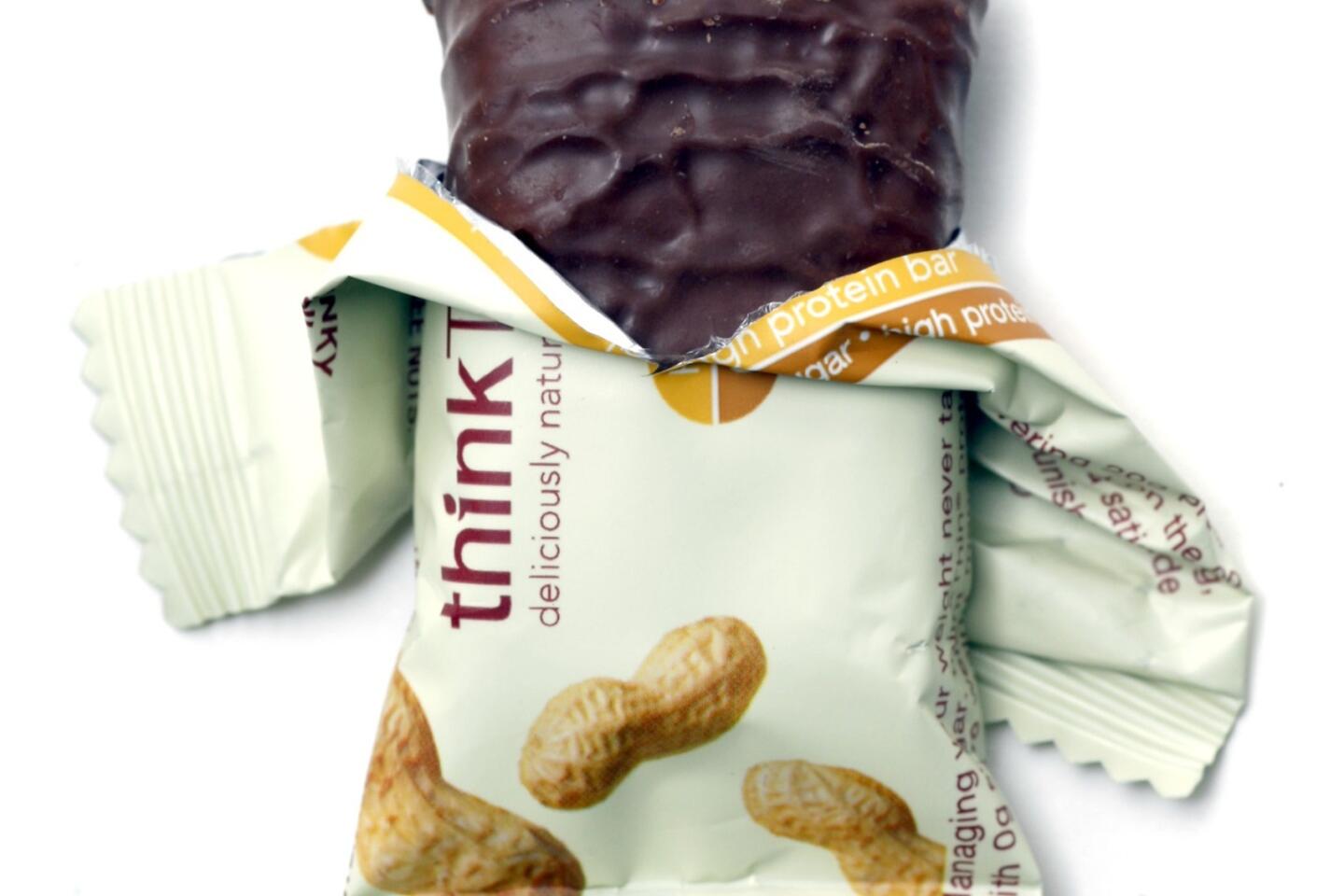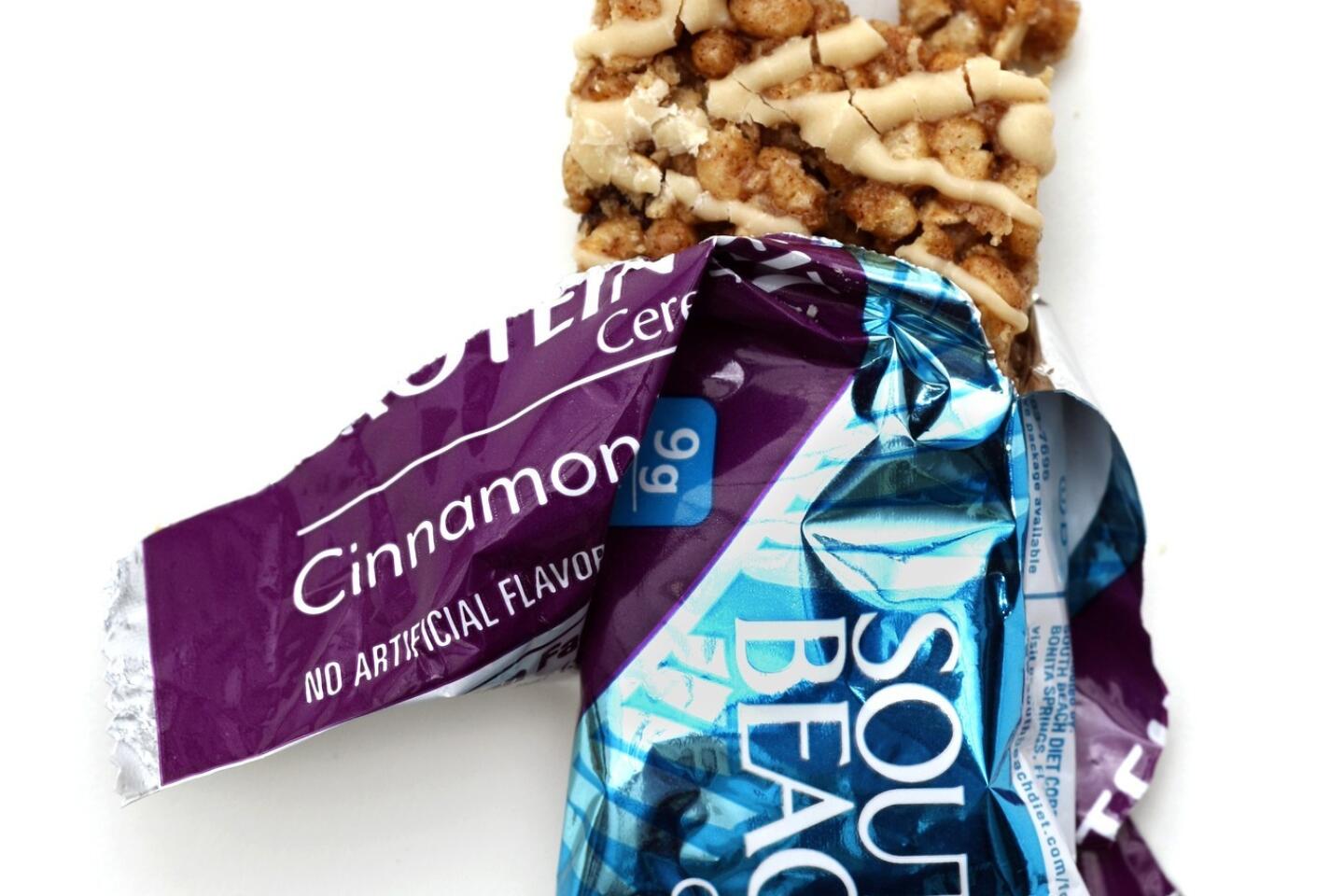For food on the go, bars are eating up the competition
Sell your oven. Empty your cupboards. There’s no need for a mixer or food processor. Keep the fridge for drinks, and maybe the blender. Eating has never been easier.
The trick? Bars, bars and more bars.
Vegan, chocolate, gluten-free, low-glycemic, raw, sugar-free, nutty, crunchy, gooey, for kids, for weightlifters, familiar old granola bars. Packed with protein, fiber, super-fruits — even some with sugar and fat. Bars for pregnant women, and the YaffBar that’s for you and your mutt to share. Lärabar’s Alt gets its protein from peas; another company harvests crickets for protein.
PHOTOS: A comparison of what’s really inside the wrapping
About a fifth of Americans will eat a bar today, says Harry Balzer, chief food industry analyst for the NPD Group. (The only bigger change in our eating habits over the last decade? The explosion of yogurts.) The market research firm Packaged Facts said in an April 2012 report that the bar business approached $5.7 billion in 2011 and is still growing.
“They’re their own food group,” says Terry Walters, a cookbook author and natural foods advocate.
What’s more, bars are wrapped in the cachet of something that’s good for you — and many of them are fine nutritionally, even though most bars have opaque packaging so it can be hard to judge.
And energy bars sound pretty healthful, right? But the truth is that that just means they have calories. So before you load up for the weekend, read the label. Easy doesn’t necessarily mean healthful.
In many cases, Walters says, bars are fast food and not so different from the drive-through. What they can do is fit in a pocket or purse and last for a long time in the glove compartment. Long-distance runners can eat them on the course, and busy travelers can make a meal of them on the plane or subway.
The popularity of bars “is a perfect reflection of where we are culturally,” says Mollie Katzen, who has been writing cookbooks since the counterculture days. Her latest, “The Heart of the Plate: Vegetarian Recipes for a New Generation,” is out this fall
Bar makers are slicing the market to attract very specific customers: dieters on Medifast; the socially responsible with This Bar Saves Lives (which donates to abate hunger); or athletes with Builder’s Max bar, which has 30 grams of protein, made by the 20-year-old company Clif.
Many consumers are looking for protein sources that are cheaper than meat, so that’s one draw, but bars are not necessarily cheap; they can top $5.
Whatever happened to packing a sandwich or leftovers from last night’s dinner, asks Katzen, who says her daughter, a young adult living in New York City, carries bars in her bag because they’re easy.
Shane Emmett, chief executive of Health Warrior, which makes Chia Bars, gets that. The former college swimmer now has a baby, runs and even does push-ups in his Richmond, Va., office.
“I wish I could make a giant pot of kale for lunch every day, but I’m too busy,” he says. “Americans genuinely aspire to be healthier, genuinely aspire to push back against the modern Western diet, but they are not going to sacrifice taste and convenience.”
Many people are, however, willing to sacrifice a meal by substituting a bar.
“By their nature you make certain compromises from a nutrition standpoint,” says David Heber, director of the UCLA Center for Human Nutrition. But sometimes “that’s your best choice. If there’s nothing but fast food around, it could be a good thing to have.”
Bars have been around since the 1970s, thanks to the granola bars of the hippie era, Heber says. But it has taken a few decades for bars to take up row after row of shelf space. “It’s not that we are snacking more; it’s that we are taking snack foods and we’re making them meals,” says Balzer, who regularly surveys consumers on their food habits.
Bars are thriving, Balzer adds, because manufacturers have hit the product trifecta: something that makes life easier, something that saves money and something new.
Reading the ingredient lists on some bars might require a chemistry degree, but there’s plenty of real food in them too: peanut butter, nuts, rice, chocolate, cranberries, coconut, seeds, oats. Others are about what is not in them: gluten, dairy, soy, sugar, anything GMO.
Pat Crowley says his bars, called Chapul, the Aztec word for cricket, are something new. With crickets as the source of their protein, they come in flavors that reflect the world: Thai, with ginger coconut and lime; Aztec, with coffee, chocolate and cayenne; and American, with peanut butter and chocolate.
Kristen Buchanan traveled frequently as a member of the 1996 U.S. Olympic hockey team, and she lived on bars when she couldn’t find foods she wanted. But she wasn’t happy about it and decided to create her own, the Good on Ya Bar, with nuts, seeds, raw honey, hemp and oil.
She’s optimistic: “I don’t think the market is going to go away. You notice how many bars there are because everyone wants a bar.”
A comparison of what’s really inside the wrapping
Dizzied by the dozens of bars on the shelves? Here are some tips from the experts:
First and last, read the labels. Check nutrition facts for things you want and for what you want to avoid for allergies.
“Make sure you are getting protein for your money,” because that will help maintain lean body mass and control hunger, says David Heber, director of the UCLA Center for Human Nutrition. He says 10 grams in 150 calories is a good balance.
Beware of the fat. Look for trans-fat calories. And, Heber says, as the protein count goes up, so does the fat, which with sugar help make the bars palatable.
Look at total calories. Some bars are intended to be meal replacements, with 350 calories or more. Others are made as snacks. And be aware of whether the bar is labeled as one or more servings.
For context, consider a 1.86-ounce Snickers bar. It is 250 calories, with 12 grams of fat and 27 grams of sugar, 1 gram of fiber and 4 grams of protein. Nutrition information for a few bars can be found here.
ALSO:
Going for a full drench in a hot power yoga class
What date labels on food can, and can’t, tell you
How to maintain healthy hair through the decades
More to Read
Eat your way across L.A.
Get our weekly Tasting Notes newsletter for reviews, news and more.
You may occasionally receive promotional content from the Los Angeles Times.
